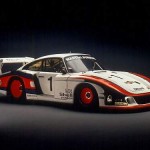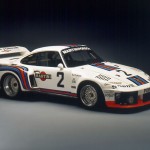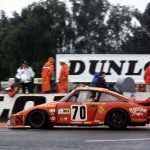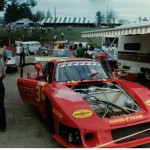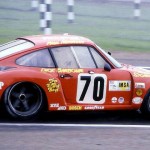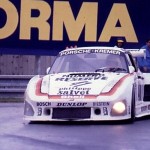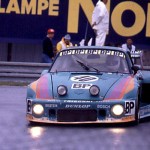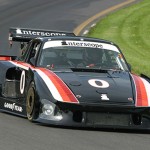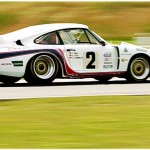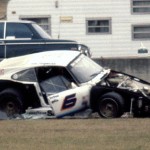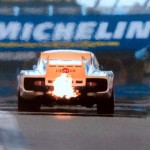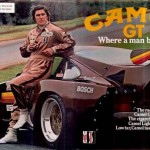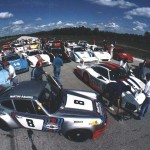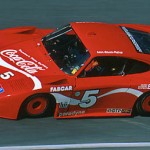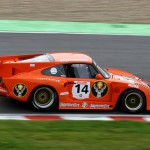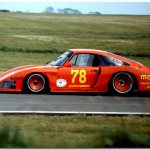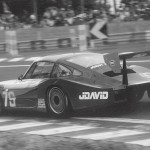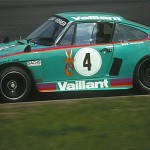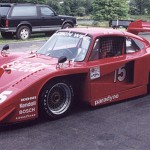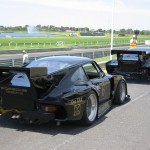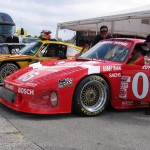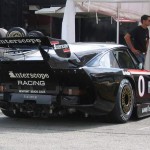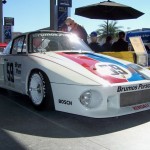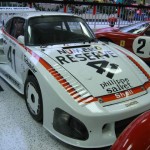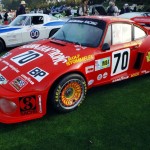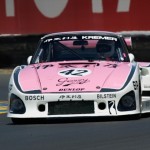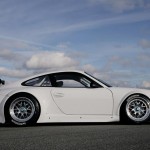The Mighty Porsche 935
When Porsche brought out its current GT2 contender, the 997 GT3 RSR, there was a warm, fuzzy feeling amongst many when they got their first glimpse of the thing. Something about the stance transformed the latest generation of water-cooled racers from mildly effeminate to old school machismo. The low down front stance and the mile-wide rear arches – filled by giant BBS wheels – were redolent of something altogether more muscular.
The good vibrations were set off because there is more than a whiff of perhaps Porsche’s greatest 911-based racer about the RSR – and that’s the fabulous, flame-spitting 935, which was the default choice for teams wanting to go sports car racing from the late-Seventies to the mid-Eighties.
Having started to try applying forced induction to its cars as early as the 1950s, Porsche’s first successful turbo car was the mighty Can-Am 917. The technology that created the 1500bhp monster 917 was adapted to make a range-topping grand tourer for the 911 range – albeit a grand tourer capable of delivering the sort of wallop usually reserved for space travel.
Initially thoughts of homologation specials and racing the 911 turbo weren’t part of Porsche’s thinking – only of making something that would appeal to potential Ferrari and Lamborghini buyers. But then for 1976 the FIA had one of its regular fits of tinkering with the regulations for sports car racing, with the result that there were two top-level series: a World Sports Car Championship for sports-prototype machinery and a World Championship for Makes featuring production-based cars.
So it was that the 935 was born, to use Porsche’s turbocharged muscle to hold on to its place as the doyen of sports-GT. Firstly it built a production-based car for customer teams, the 934, and then set about producing something with the stuff of legend about it – the 935. When it appeared the car was a trifle gawky-looking, with the front end of a 934 and the back end of extraordinary proportions. The problem was in trying to coax the fabulous power that could be wrought from the motor onto the asphalt beneath without reducing the driver to a gibbering wreck.
The old 911 argument so beloved of sports car purists raged on internally at Porsche: namely how to get a car designed with its engine in the wrong place to handle effectively. The problems of a tiny car with a tiny wheelbase and a hugely powerful lump of motor hanging off the back grew exponentially thanks to the turbo. From the outset fully 600bhp was available but, because of turbo lag, the driver never actually knew when it would kick in.
In order to tame the beast, the 935 evolved race by race through 1976. Six weeks and half a million Deutschmarks delivered a rear wing capable of keeping the back end steady through high speed corners but increased drag enormously. Porsche designer Norbert Singer then spotted a loophole in the regulations which allowed the standard 911 nose to be replaced by the shovel-like ‘Flachbau’ and suddenly the 935 was transformed.
The records show that in 1976 and 1977 the Porsches were all-conquering. Maybe so, but that was as much down to the work of the Kremer Racing team developing its own, reliable take on the car as much as the fast but frail – and devilishly pretty – Martini-liveried works cars. So it was that the works team let Kremer and its customers battle BMW while it tried to diversify the 935 into the 2.0-litre ‘baby’ (used for one race and mothballed), and the lowered and stretched Le Mans contender, the 935/78 ‘Moby Dick’ (used for two races and, erm, mothballed).
In three seasons the Martini Porsche 935s had won nine races before the cars were wheeled in to the factory museum in 1979. Yet thanks to Kremer, whose cars had proven almost as fast and far more reliable, the 935 was about to take off into history. As the Martini cars disappeared, Kremer revealed its definitive 935 model – the K3 – and with it won the Le Mans 24 Hours outright.
From then on specialised models were developed, taking the total to 35 individual types of car which could rightfully be called Porsche 935s – many of which topping 800bhp. The Kremer-designed K3 was the mothership, the pride of the fleet and the source of 53 out of the 935’s career total of 150 international wins but its offspring ranged from replicas of the ‘baby’ and ‘Moby Dick’ factory machines to a slab-sided GTP version campaigned in the USA – of which one driver, the great Bob Akin, said: “You can’t make a race car out of a pig… but you can make an awfully fast pig.”
It may have started life as a pig to drive and ended as a pig to look at, but between 1976 and 1986 there was simply nothing to touch the Porsche 935… thanks in no small part to Kremer Racing.
Porsche 935 Major Victories:
1976 FIA World Championship of Makes
1977 FIA World Championship of Makes
1977 Daytona 24 Hours
1977 German DRM Championship
1978 Daytona 24 Hours
1978 Sebring 12 Hours
1978 German DRM Championship
1979 Daytona 24 Hours
1979 Sebring 12 Hours
1979 Le Mans 24 Hours
1979 German DRM Championship
1980 Daytona 24 Hours
1980 Sebring 12 Hours
1981 Sebring 12 Hours
1982 Daytona 24 Hours
1982 Sebring 12 Hours
1983 Daytona 24 Hours
1984 Sebring 12 Hours
More feature stories here


